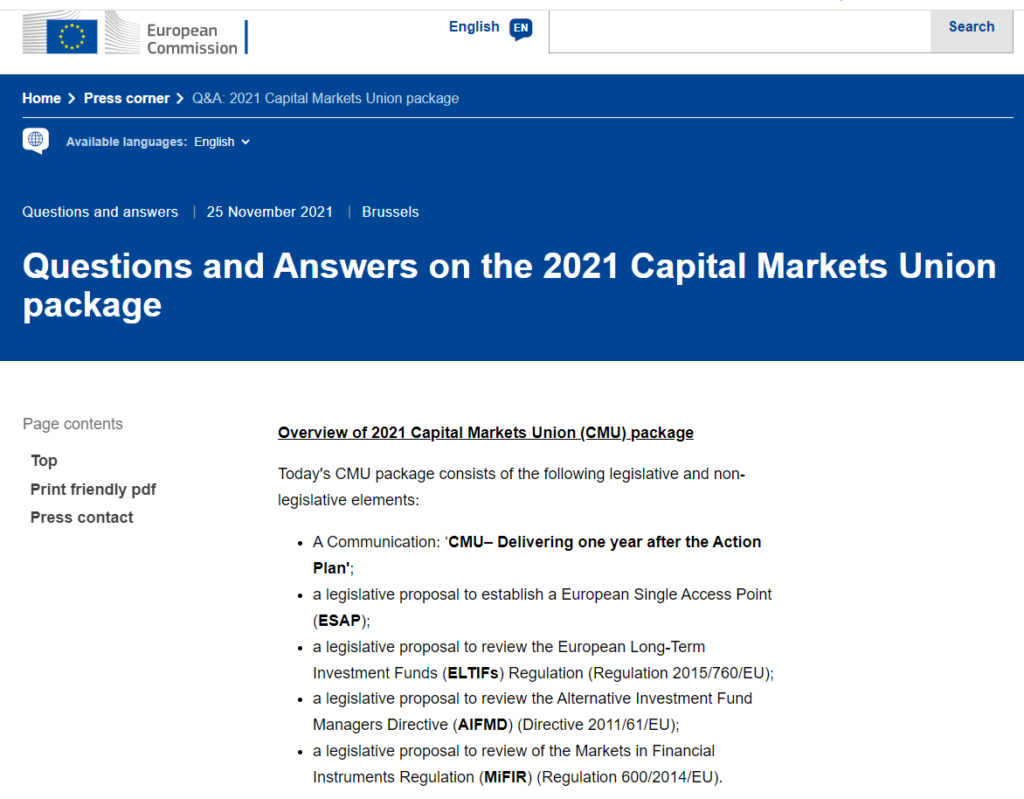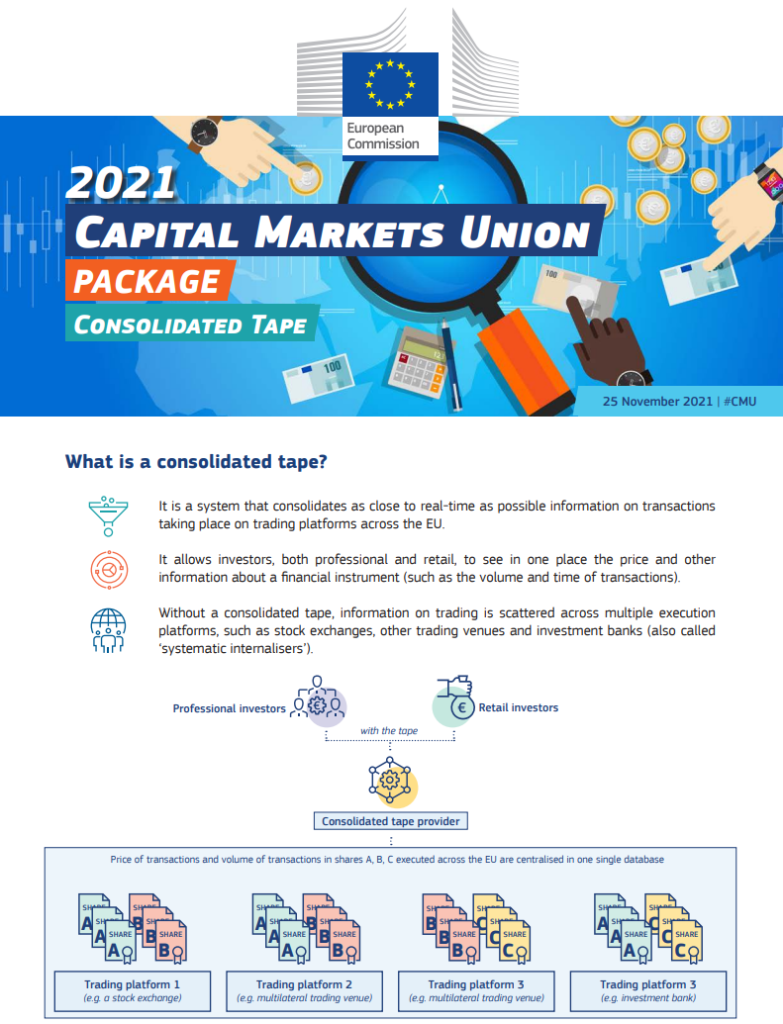Following on from last week’s blog, I realised maybe I had jumped the gun somewhat. Since the European Commission has now published their report (and a Consolidated Tape for derivatives is included), I thought it worthwhile to take a step back. What actually is a Consolidated Tape and what that might mean for Transparency in our European derivatives markets?
What Did The EC say?
The Commission helpfully lays out the intentions of the review:

- An EU wide consolidated tape should be established. And importantly:
The proposed reform of MiFIR addresses the reasons why no CTP has come forward. It amends the CT provisions in MiFIR to facilitate the emergence of one CTP for each asset class (shares, ETFs, bonds and derivatives).
EC: Enhancing market data transparency, removing obstacles to the emergence of a consolidated tape, Optimising the trading obligations
2. Transparency should be “boosted”. The EC listened (to us and others) and is simplifying/removing most of the deferrals in place. Great news, although I retain a fear that this may not go far enough (two week deferrals are mentioned) but I am focusing on the positives today!
[In] non-equities (such as derivatives and bonds), transparency will be significantly increased by reducing recourse to so-called ‘deferrals’ that allow for the delayed publication of core details of transactions.
EC: Overview of 2021 Capital Markets Union (CMU) package
3. Change the Derivatives Trading Obligation. This looks to be a well intentioned move to remove complexity (and hopefully liquidity assessments!) and we hope will result in more on-venue trading:
The obligation to trade certain derivatives on exchanges will be aligned with the scope of the clearing obligation.
EC: Overview of 2021 Capital Markets Union (CMU) package
They even include a nice little infographic explaining better than I can what a Consolidated Tape is! Maybe all regulations should come with infographics….although I guess we’d lose a lot of readers on this blog as a result 😛

Commercial Models
How will a Consolidated Tape work in practice? I think the proposal states:
- Data sources such as Trading Venues and APAs are mandated/obligated to produce data and provide it to a (registered) Consolidated Tape Provider.
- In return, a CTP would agree some type of revenue share with the data sources.
- The CTP then consolidates and publishes all of the data it receives.
- It looks likely that there will be a single, ESMA-anointed/appointed, provider of a CTP per asset class.
From reading the docs here, I cannot quite work out whether ESMA will choose a single commercial model and apply it to all CTPs, or whether there is the possibility for different commercial models for different asset classes. For example, from an equities viewpoint, there are considerations over latency and where the CTP consolidates the prices. This is clearly not relevant for e.g. interest rate swaps trading. So it would be odd to enforce a specific commercial model across the board. I look forward to seeing the final proposals.
As we have said in the past, the concern is that a small outfit such as Clarus cannot maintain multiple revenue share agreements with multiple (100s?) providers of data. Maintaining, reviewing, recording, measuring and even paying all of those “royalties” is unrealistic. How will this be handled? A standardised agreement? A single payment which ESMA then divvies up? Hard to tell from this high level text.
BUT I am focussing on the positives here! This must be a step in the right direction toward proper Transparency in Europe.
Let’s celebrate that good news! And we look forward to seeing and hopefully helping this play out toward a good outcome for all market participants.
